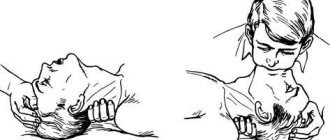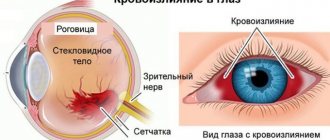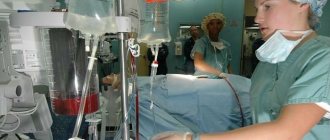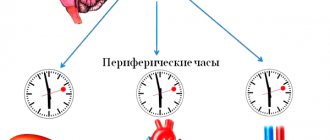One of the most insidious acute life-threatening conditions is internal bleeding. They are a pathological condition accompanied by the release of blood from the vessels into the free abdominal cavity, retroperitoneal space or hollow organs (stomach and intestines). The whole complexity of the situation is that usually most diseases cause concern in a person in connection with the signaling pain syndrome. With any bleeding there are no such signs. This leaves this problem unnoticed for a long time. They begin to pay attention to it only when the condition of patients sharply worsens. But there are specific symptoms of internal bleeding, knowledge of which can help in the timely diagnosis of this complex problem.
Signs of internal bleeding
By paying close attention to all changes in the body, you can notice seemingly ordinary changes. Over time, they gradually worsen. Immediate signs of internal bleeding:
- Poor health and general weakness;
- Dizziness and fainting;
- Drowsiness and apathy (lack of interest in anything);
- Unnatural paleness of the skin;
- A decrease in blood pressure below those figures that are typical for a particular person in normal times (arterial hypotension);
- Increased heart rate (tachycardia).
All of the listed symptoms are general. They are typical for any type of internal bleeding. There is another group of clinical manifestations that relate to specific signs of a particular type of this disease. They will be discussed in other sections of the article.
The only thing worth focusing on is the speed of development and progression of symptoms. Sometimes all the signs grow so quickly and spontaneously that neither the patients themselves nor the people around them can understand what is happening. But it happens that the situation develops gradually with a gradual deterioration of the general condition and worsening symptoms. This variant of the clinical course of internal bleeding is more favorable, as it makes it possible to notice threatening symptoms and promptly seek help.
The intensity of internal bleeding and the rate of increase in its symptoms depend on the cause of its occurrence and the diameter of the bleeding vessels. The larger the vessel is damaged, the heavier it is!
Rules for applying a tourniquet
A tourniquet is applied only to stop arterial bleeding, and also if an arm or leg was amputated as a result of injury. In other cases, the use of a tourniquet is not advisable due to the high degree of injury to the skin and soft tissues. To temporarily stop bleeding, you can use an Esmarch tourniquet or a handy rubber material.
Rules for applying a tourniquet for bleeding
Basic rules and sequence of applying a tourniquet:
- If possible, raise your arm or leg for a few seconds and fix it in a comfortable position - this will lead to the outflow of venous blood.
- The tourniquet is applied over clothing or a piece of fabric is placed under it. This is necessary to protect the skin.
- The first two turns need to be made as tight as possible, they are the ones who stop the blood, while the crosshair is applied on the back side of the artery.
- The maximum duration of applying a tourniquet in the warm season should not exceed 90 minutes, in the cold season - 60 minutes. If during this time the victim cannot be taken to the hospital, the tourniquet should be loosened for 10-15 minutes and the artery should be pressed with a finger. Then the tourniquet is applied again, 1-2 cm above or below the previous location. The duration of applying a tourniquet to children should not exceed an hour.
- The time for applying the tourniquet must be written down and attached in a visible place. In reality, due to problems with drawing up (searching for paper and pens in field or combat conditions, while there are more pressing tasks of saving the life of the victim) and preserving (the paper gets soaked in blood and spreads or is simply lost) notes, in modern In practice, it is customary to write the time of application of the tourniquet with a marker directly on a visible place on the body, for example, it could be the forehead; it is recommended to indicate the name of the rescuer or the person who applied the tourniquet.
Esmarch rubber hemostatic tourniquet
Indications:
- traumatic amputation of a limb;
- inability to stop bleeding with other known means.
Advantages:
- quite fast and the most effective way to stop bleeding from the arteries of the limb.
Flaws:
- the use of a tourniquet leads to complete bleeding of the distal limbs due to compression of not only damaged great vessels, but also collaterals, which for more than 2 hours can lead to gangrene;
- nerve trunks are compressed, which causes post-traumatic plexitis with subsequent pain and orthopedic syndrome;
- cessation of blood circulation in the limb reduces the resistance of tissues to infection and reduces their regenerative abilities;
- the use of a tourniquet can cause severe vasospasm and lead to thrombosis of the operated artery;
- restoration of blood circulation after use of a tourniquet contributes to the development of tourniquet shock and acute renal failure;
- the use of a tourniquet is impossible on the torso or is limited in anatomically difficult areas.
Errors:
- its use without indications, that is, for venous and capillary bleeding;
- application on a naked body;
- far from the wound;
- weak or excessive tightening;
- poor fastening of the ends of the tourniquet;
- lack of accompanying note;
- use more than 2 hours;
- covering the tourniquet with a bandage or clothing.
If there is severe bleeding, a tourniquet is applied to the upper third of the shoulder or middle third of the thigh. In these areas, the anatomical location of the humerus and femur makes it possible to stop the bleeding with maximum efficiency. Applying a tourniquet in other places will not give the desired result. If a limb is torn off, applying a tourniquet is mandatory even in the absence of bleeding.
If the tourniquet is applied correctly, characteristic signs will appear after a while. The limb below the application site will turn pale and cold, the bleeding will stop, and the peripheral pulse will not be palpable. The intersection of the tourniquet should be on the outside of the arm or leg, since the artery is located on the axillary side.
Types of internal bleeding and their manifestations
If we consider this issue globally, we can say that internal bleeding is one in which the spilled blood does not have direct contact with the external environment. Therefore, many do not classify bleeding from the stomach and intestines as internal. But, if we take into account that they may not cause specific symptoms for a long time, then it is advisable to consider them in the context of internal ones. After all, the main thing is to suspect a problem as early as possible, and everything else will be clarified during the process of observation and diagnosis in a medical facility.
All types of internal bleeding and their corresponding specific symptoms are shown in a visual table.
| Type of bleeding | How to spot internal bleeding |
| Bleeding into the free abdominal cavity (ruptures of internal organs: liver, spleen) |
|
| Bleeding from the pelvic organs (ruptures of the ovaries, uterus and fallopian tubes) |
|
| Bleeding into the retroperitoneal space (ruptures of the abdominal aorta, kidneys and adrenal glands) |
|
| Gastrointestinal bleeding (diseases of the stomach, small and large intestines, leading to exposure of blood vessels) |
|
Laparoscopy is the most modern method for diagnosing and treating internal bleeding
Pressure of arteries
In order not to get confused in case of bleeding and quickly find a suitable place to press the vessel, you should remember the following points of the body.
- Inguinal fold – in case of leakage from the thigh vessel.
- Popliteal region - with bleeding from the artery of the leg.
- The axillary region, the inner side of the biceps muscle - for the damaged arm vessel.
- The area on the neck (inner edge of the sternoclavicular muscle) - when flowing from the carotid artery.
- Supraclavicular surface - to stop bleeding from the subclavian vessel.
Immediate causes
The following diseases and conditions can lead to internal bleeding:
- Closed and open abdominal injuries with damage to internal organs (liver, spleen, mesentery of the small intestine);
- Ovarian apoplexy (ovarian ruptures);
- Rupture of an ovarian or pelvic cyst (most often occurs during sexual intercourse);
- Active physical activity (can provoke ruptures of cystic ovaries or enlarged internal organs);
- Injuries of the lumbar region;
- Aortic aneurysms that begin to dissect;
- Peptic ulcer of the duodenum and stomach;
- Ruptures of the mucous membrane of the esophagus (Malory-Weiss syndrome);
- Varicose veins of the esophagus and stomach;
- Disintegrating tumors of the gastrointestinal tract, abdominal cavity and retroperitoneal space.
Internal bleeding can never be an independent disease. They are always either the main manifestation or a complication of a number of pathological conditions.
Prohibited actions
What you should absolutely not do:
- Give enemas.
- Give any medications. It is not safe. The use of medications is impossible; a sharp deterioration in the condition is likely.
- Under no circumstances should you heat the affected area. This will lead to the dilation of blood vessels and will cause a sharp increase in the intensity of the outpouring of liquid connective tissue.
- Also, you should not move the patient again, so as not to provoke increased bleeding.
Attention:
Self-action in such a serious situation is the best way to ensure death for the patient. Everything must be within the minimums described above.
What is the danger and what to do
It is very important to know how to behave correctly in case of internal bleeding. After all, a person’s life often depends on it. Undifferentiated tactics boil down to the following activities:
- Lay down a patient with the slightest sign of internal bleeding. All further actions must be carried out strictly in a horizontal position of the patient;
- Cooling the abdomen (ice pack or cold heating pad on the lower abdomen, hypochondrium or lumbar region, depending on the suspected location of the source of bleeding);
- Transport the patient in this position to the nearest medical facility.
If you neglect the rules of first aid, this can lead to increased bleeding and massive blood loss. Such conditions are always very dangerous and pose a direct threat to human life.
In a surgical hospital setting, specialists can choose the following tactics.
| Situation | What actions |
| Minor bleeding with signs of self-stopping and moderate blood loss. The diagnostics revealed no severe injuries and no significant accumulation of blood in the abdominal cavity. | Observation, infusion therapy with intravenous saline solutions (Ringer, saline, rheosorbilact, refortan), hemostatic drugs (aminocaproic acid, etamsylate). |
| Severe blood loss of any origin, regardless of the causes and damage to organs | Emergency surgery with parallel fluid therapy to maintain the most important vital parameters. |
In the vast majority of cases of internal bleeding, emergency surgical treatment is required. This is the only way to save lives and prevent complications.
How to quickly stop bleeding?
Small injuries can be easily localized by applying pressure to the wound for 5 minutes with a hand or cloth to form a blood clot. For cut wounds, the edges will stick together after some time. The skin around the wound is carefully wiped with the available antiseptic, then a bactericidal patch or sterile bandage is applied.
If a deep venous injury with drip bleeding is detected, it is necessary to sit or lay the victim down in order to elevate the damaged area above the heart. A hemostatic sponge is applied to painful large wounds, securing it with a bandage. The sponge gradually dissolves on its own; there is no need to remove it. In the absence of a sponge, apply a pressure bandage to the wound. Gauze folded in 2-3 layers and a bandage for fixation are suitable. If blood has leaked through the bandage, apply a piece of cotton wool and bandage again over the first bandage.
With internal bleeding, the victim feels drowsiness, weakness, and wants to drink. The pulse quickens, the pressure drops, the head is dizzy. Damage to the stomach is indicated by vomiting blood, intestines - tar-like stool, rectum - scarlet blood in the stool, ureters - red urine. If internal capillary bleeding is suspected, first aid will be to lie the victim down and apply cold to the damaged area. Then the doctors who arrived to the call act.
Forecast
Controversial. Depends on the situation. There are two main factors. This is the degree of the disorder (its severity), as well as the moment of initiation of therapy. With timely treatment, if the disorder is relatively harmless, there is every chance of full recovery.
Internal bleeding is a life-threatening process that is not always obvious at first glance. Without proper correction, it is often fatal.
Specialists eliminate the causes of the anomaly using surgical methods. Medication methods are also used. The forecasts remain vague. When assessing prospects, you need to proceed from the situation.










